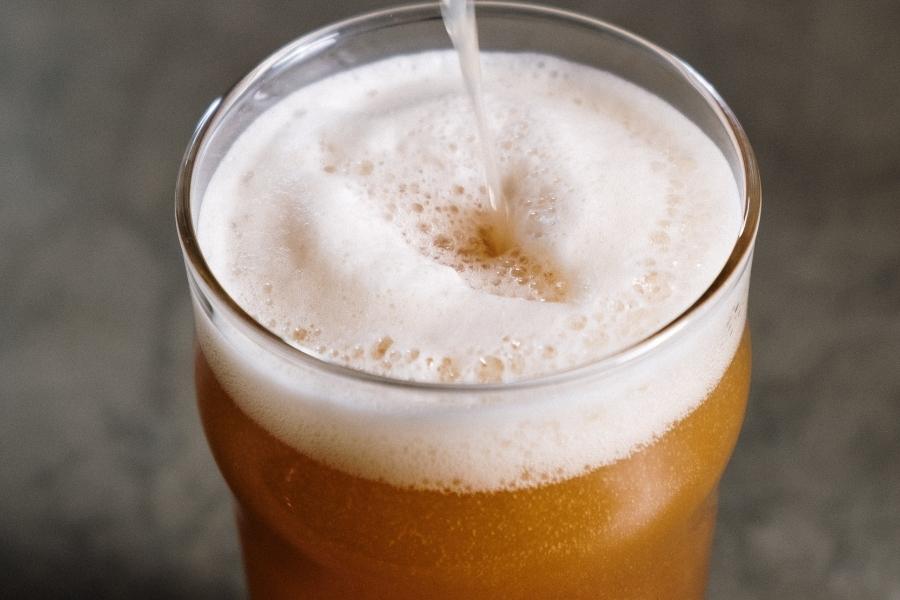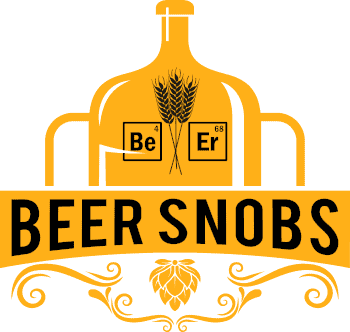If you buy something through a link in our posts, we may get a small share of the sale.
Why is my beer not bubbling? It is a question that has baffled many homebrewers and beer enthusiasts. No one wants to have a flat, lifeless beer without carbonation. Therefore, it is important to understand what can cause this problem to avoid it in the future.
Contents
Why Is My Beer Not Bubbling?
Your beer is not bubbling maybe because you forgot to add yeast when brewing or the batch was not properly sealed to ensure proper fermenting. Another reason could be a bacteria infection, or the temperature was too high for yeast to do its work properly.
Also, the carbon dioxide released during fermentation is not coming through the airlock if the seal on the fermenter is not tight. If you are using a plastic bucket as your fermenter, it is common for the lid not to fit snugly, so check that before assuming all is well.

All these do not mean that fermentation is not taking place. It is only that the bubbles of carbon dioxide are not able to escape through the airlock. The bubbles are escaping from somewhere else, which is not a good sign. If the bubbles are coming from under the lid, it means that your batch is vulnerable to oxidation.
How to Ensure Your Beer Is Bubbling
Despite all these potential problems that could explain why your beer is not bubbling, it is still possible to have a perfectly fine and delicious batch of brew that will make all your friends green with envy.
The following steps will help you keep your beer bubbling and reduce the chances of oxidation.
Try a Different Beer Yeast
The reason your beer is not bubbling could be because of the yeast you used. Try a different brand or type of yeast to see if that makes a difference. There are many different types of beer yeasts available on the market, so experiment until you find one that works best for you.
Make a Yeast Starter
A yeast starter is a small batch of wort (unfermented beer) used to jumpstart your fermentation. The quantity of wort in the starter is only about half a liter and is made from one cup of beer extract.
Yeast starter acts as a catalyst and will help your beer begin fermenting faster. It also helps to ensure that your yeast is healthy and viable before adding it to your main batch.
Use the Correct Amount of Yeast
Another reason your beer is not bubbling might be because the right amount of yeast was not added. Yeast comes in different packages, and there are charts available that tell you how much yeast to add depending on the size of your batch and the specific gravity of your wort.
Make Sure the Temperature Is Right
Your fermentation temperature should be somewhere between 68 and 70 degrees Fahrenheit. If you want to control the temperature, you can purchase a plate chiller device. However, it is not absolutely necessary. If your batch has stopped fermenting and is not bubbling, the temperature may be too low.
To raise the temperature, simply move your fermenter to a warmer location. If the temperature is too high, on the other hand, you can move it to a cooler location or add ice to the fermenter.

Keep the Carboy Clean
The reason why your beer has stopped bubbling could be due to an infection in the batch. Anything that lets bacteria and wild yeast into your fermenter can cause an infection. To avoid this, keep all your brewing equipment clean and sterilized.
The Importance of Bubbles in Beer
You don’t want your beer to be flat, so it is important to make sure that your batch is bubbling and fermenting properly. The following are some of the reasons why you should ensure your beer is bubbling:
- Carbonation: The carbon dioxide that escapes from the airlock will eventually be released into the beer, giving it carbonation.
- Flavor: Bubbles help to release the flavor and aroma of the beer.
- Head Retention: The bubbles in beer help to keep the head on the beer.
- Aesthetics: Beer just looks and tastes better when it is bubbly.
Frequently Asked Questions
When Should My Beer Start Bubbling?
The beer should start bubbling within a day or two after fermentation has begun. However, it is not unusual for it to take up to a week for the beer to start bubbling. So, don’t worry if your beer doesn’t start bubbling right away.
My Beer Has Stopped Bubbling, What Should I Do?
You can try increasing the temperature of your fermenter to get the fermentation going again. If that doesn’t work, try making a yeast starter and then adding it to your batch.
Conclusion
The moment you see bubbles in your airlock, it’s an exciting moment because it means that fermentation has started. However, sometimes you might be wondering why your beer is not bubbling. It is a normal occurrence. So, don’t worry if it takes a few days for the bubbling to start.

